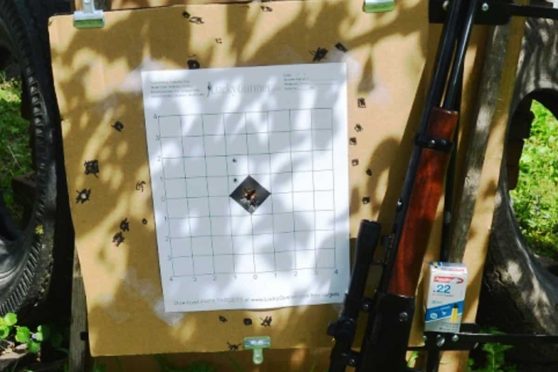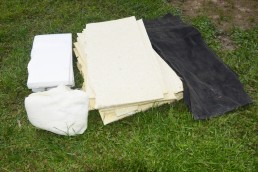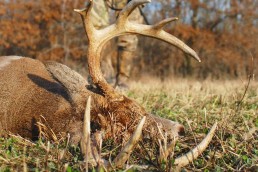Trap ’em in the Backyard
SHARE THIS POST
No matter where you are shooting, you want to put safety first. This is especially true when you’re practicing in your backyard. I have built a “bullet trap” for BBs and pellets. I call it that instead of a BB/pellet trap because I’ve also tested the Aguila Colibri 500-fps .22 caliber and one CCI 710-fps short .22 caliber.
A lot of different combinations and structures can be used. And I’ve heard of all sorts of things including newspapers, old pizza boxes, and, as one gentleman said, “just plain junk.” The single purpose of all is to stop and trap whatever is being fired out of the gun.
In my case, there are several layers of what I call “pass-throughs.” Each is to slow BBs/pellets/bullets to the point where they will never reach the backboard. But if it does that it will be set so it will make the final stop.
The first impact is a target board on the Champion field stand. After that, the round will hit four layers of heavy cardboard, patched with four more layers where the center hits, and then followed by the trap box with six layers of cardboard in the center. Inside the tightly taped “trap” box are seven layers of tree wrap carpeting and 15 layers of carpet foam. Nothing has gotten past the first layer of foam, and that was when I had less layers of carpet.

The “trap box” sits inside a “V” backing made of 1-inch plywood with a couple of tires inside, and behind the plywood is a double layer of bricks. There is also a 1-inch plywood roof.
Are you enjoying this post?
You can be among the first to get the latest info on where to go, what to use and how to use it!
All of this may seem like overkill—especially since most pellets and BBs haven’t made it into the box and ones that did didn’t make it past the first layer of carpeting—but it’s best to have it there “just in case” and to ease the thoughts of any questioning neighbors.
The carpet and the 1/2- to 3/4-inch foam padding have proven to be very good, and it’s easy to layer inside boxes. Asking carpet companies to help obtain these items can work sometimes, especially if they have anything left over from an installation job that they want to dump. If allowed, you can also check dumpsters, but be sure to obtain permission for the store or buisness owner as there are rules and regulations in many areas about “dumpster diving.”
If this is not available or possible, I’ve also used foam packing, especially the injection foam type. I was also once told that plastic milk jugs could be filled with the injection foam. However, I would check first to see how it reacts with the plastic since many of these materials don’t work together and will melt or cause a toxic smoke. No matter what is used for BBs and pellets, it’s always good to have a few layers of carpeting, as this is one of the best stoppers.
For my “backyard trap,” I’m the only one shooting so I know what’s going on. And if I ever let anyone else shoot, I make make sure that they know what they are doing before they fire a single round. Even then I’d keep them to BBs and pellets. And depending on the person, including myself, the Aguila Colibri, 21-grain, 500-fps .22-caliber ammunition, which is less than many pellet guns, is used.
As a sidenote, so far Shoot ‘N’ Plink has focused on regular firearm target shooting—mainly the .22 caliber. Starting with this article, the column will have an equal amount, if not a little more, regarding airguns. This is very popular in target shooting/plinking, especially with the realism in air replicas such as those made by Umarex. Yes, there are still some .22-caliber Browning pistols and Henry rifles to be reviewed as well as ammunition tests, but anything with scopes and red dot sights and other such subjects can be applied both ways.
Did you enjoy this post?
You can be among the first to get the latest info on where to go, what to use and how to use it!
Dan Galusha
Dan Galusha has fished all of his life, worked more than 45 years in the outdoor/media industry, and was inducted into the Fresh Water Fishing Hall of Fame as a Legendary Communicator. Direct questions through dansfishntales.com, facebook.com/dansfishntales and facebook.com/shootnplink.

